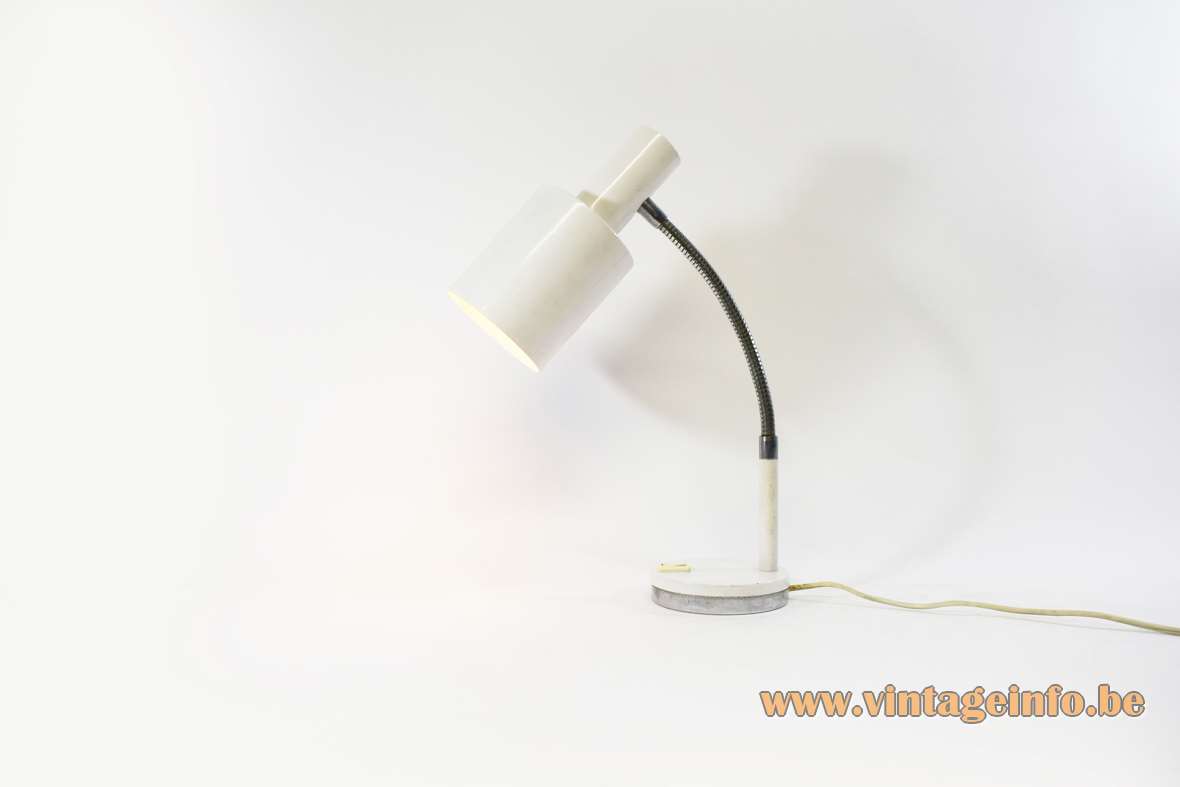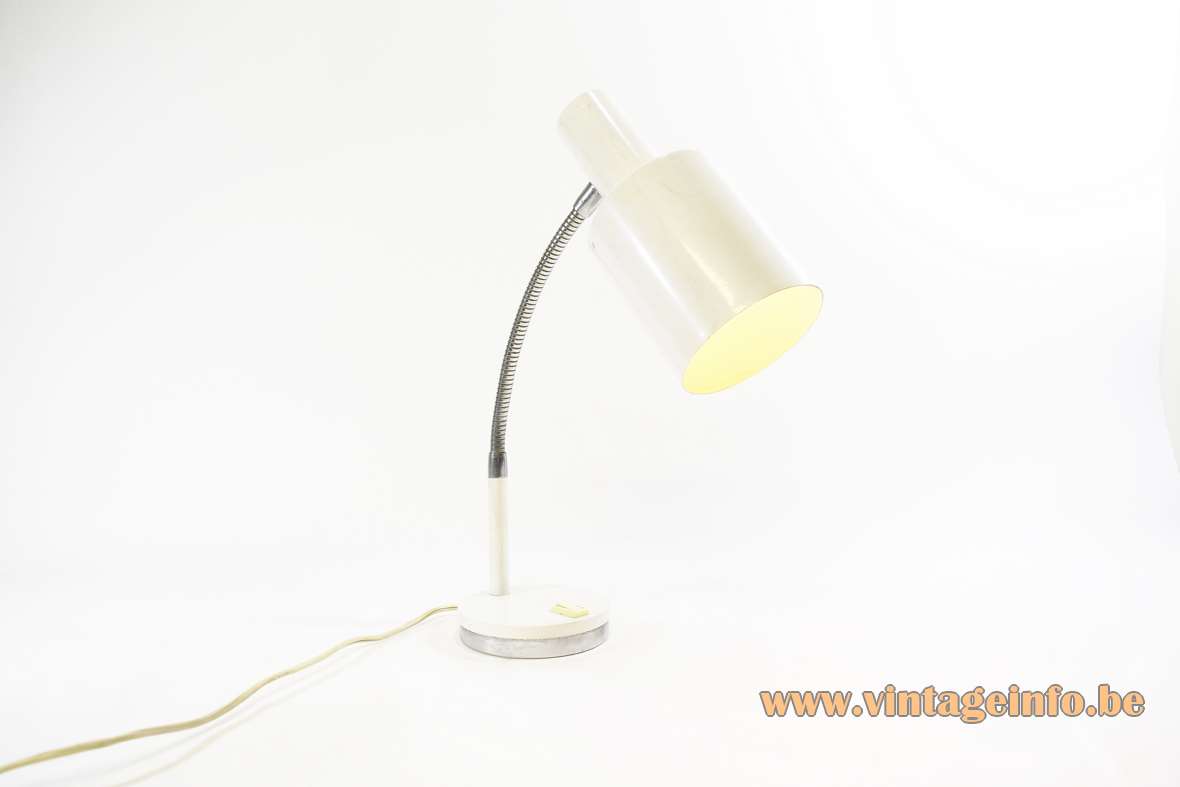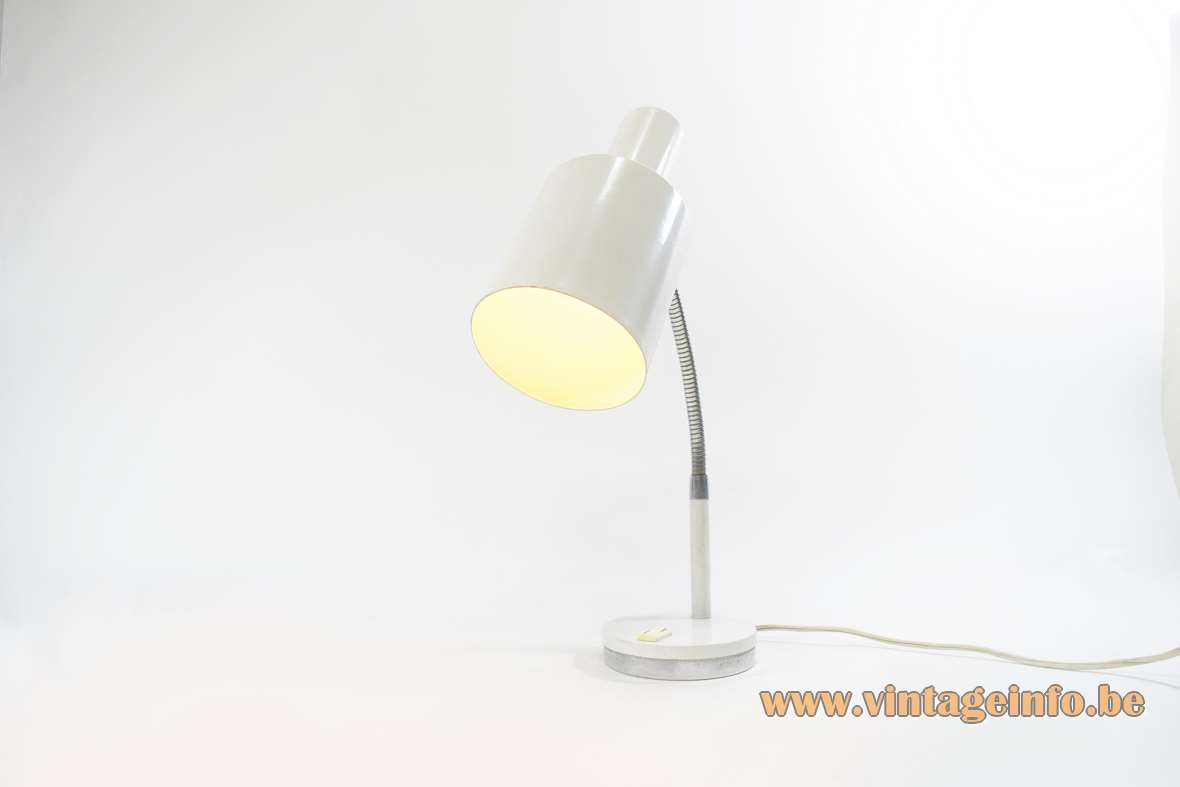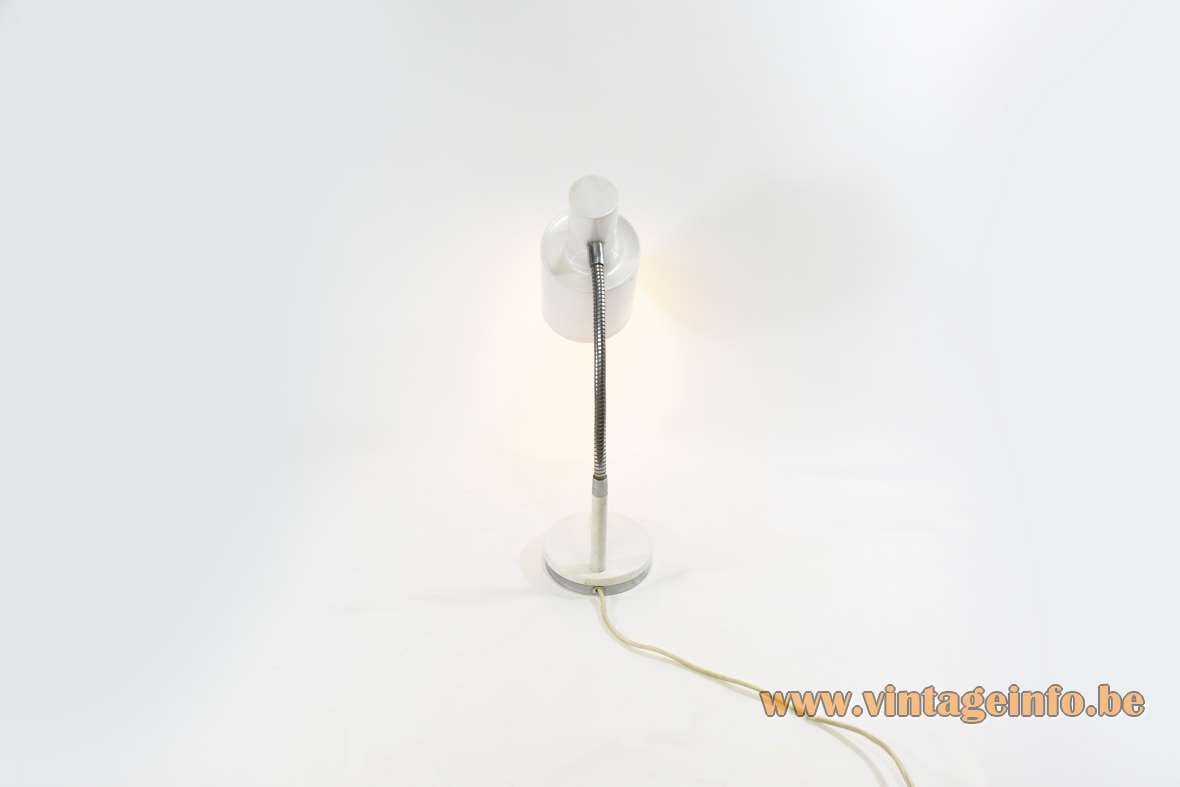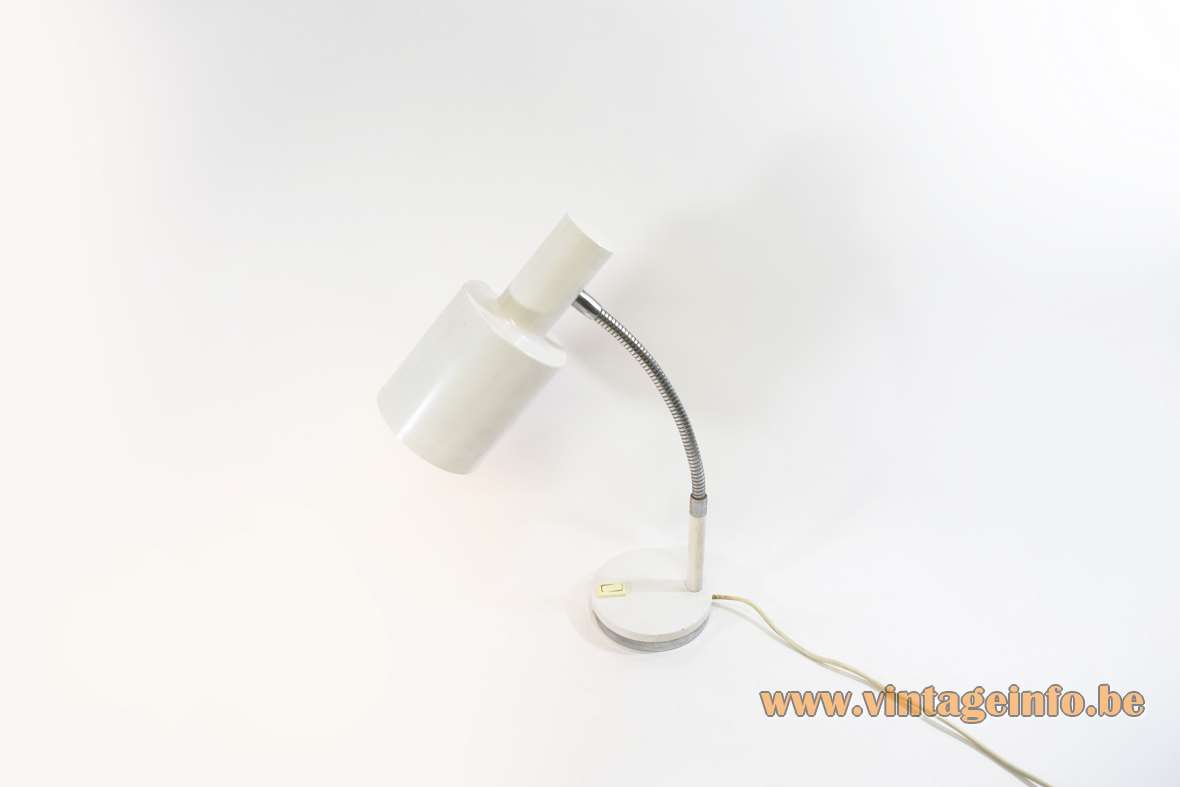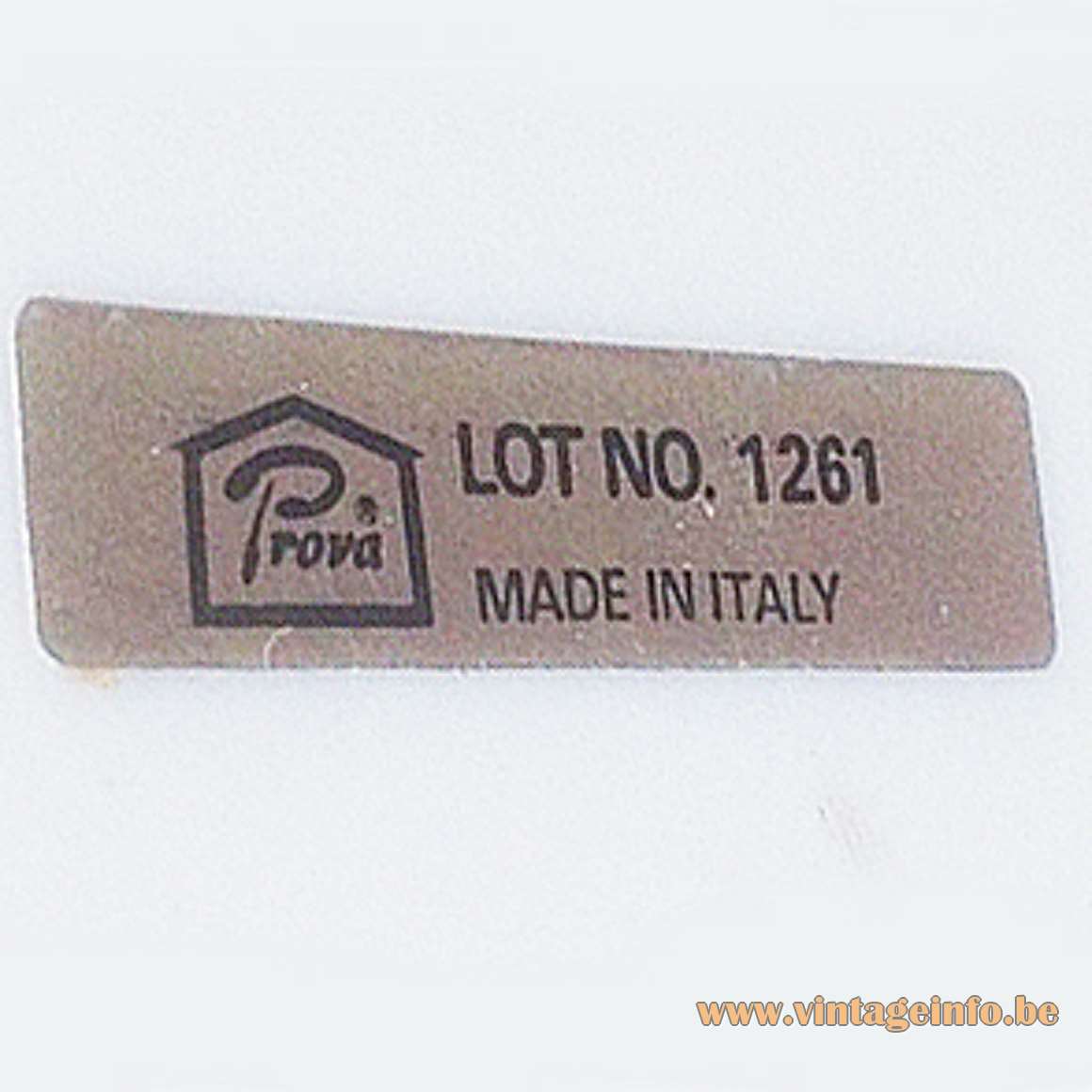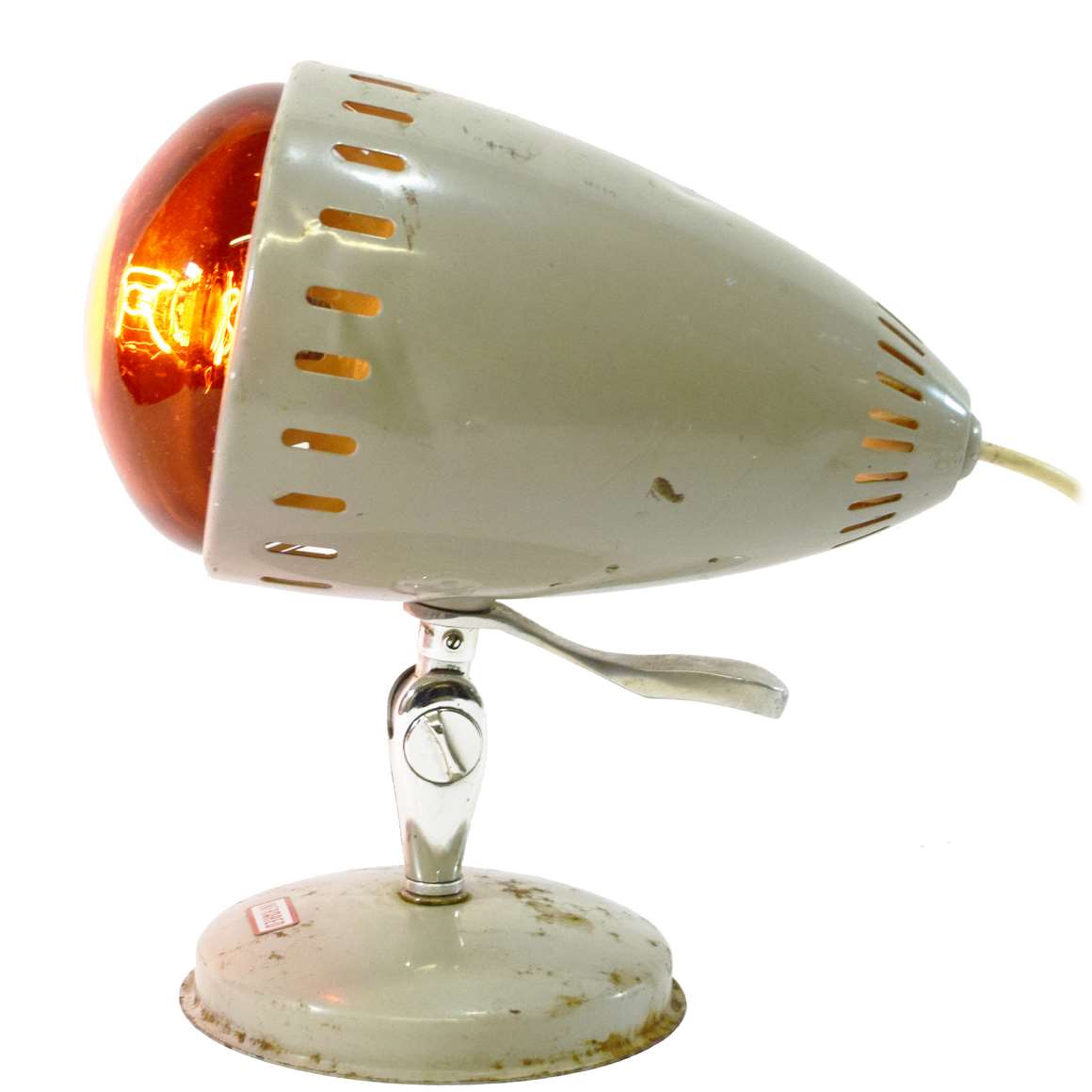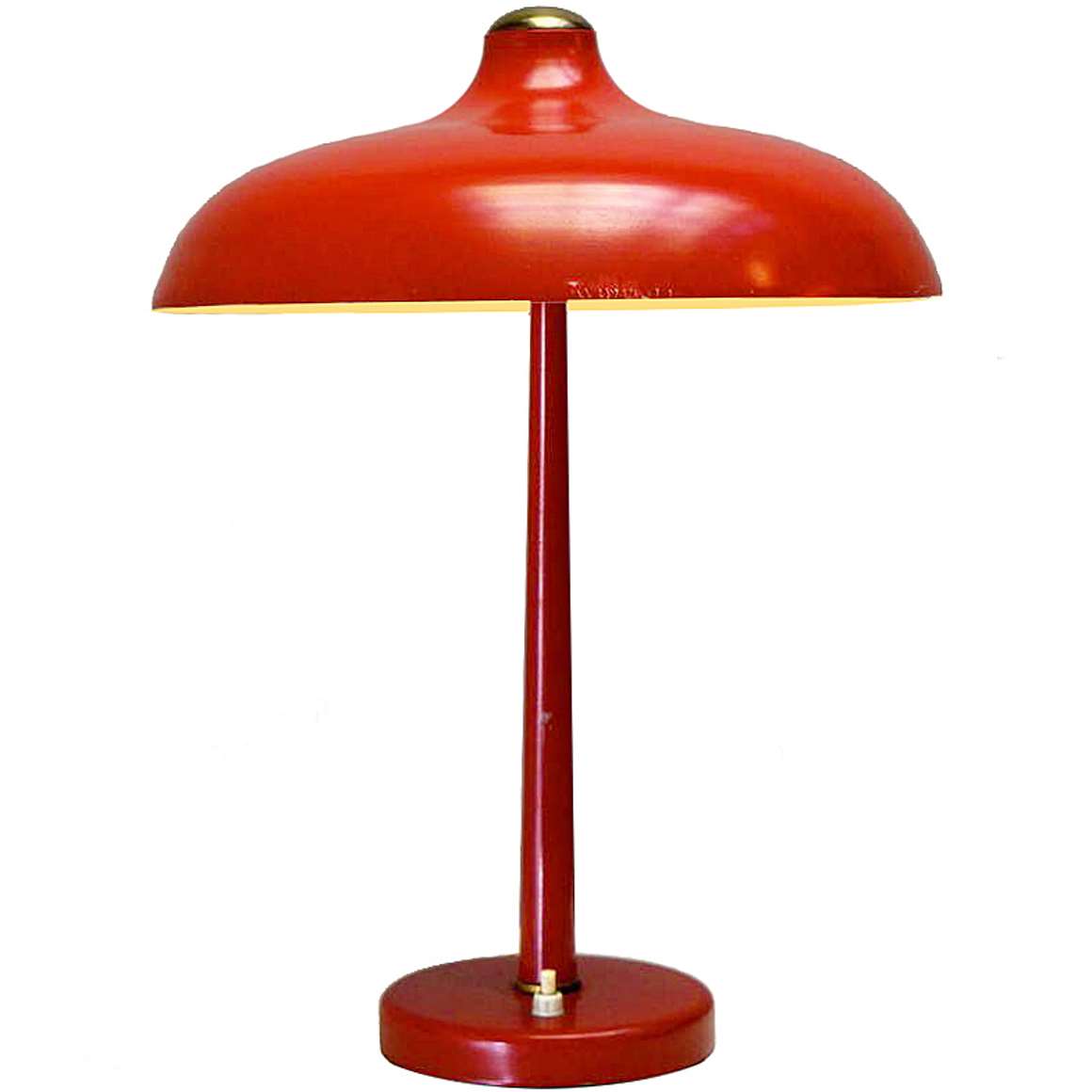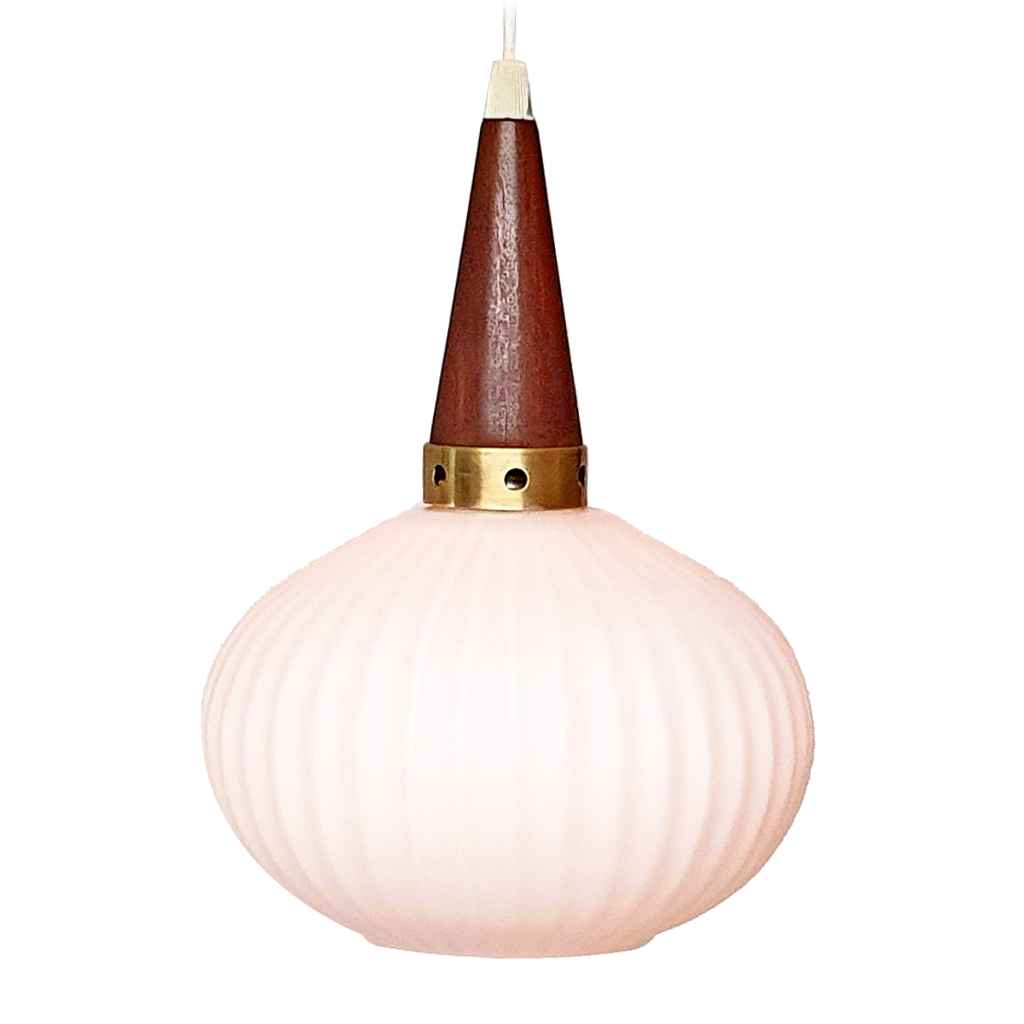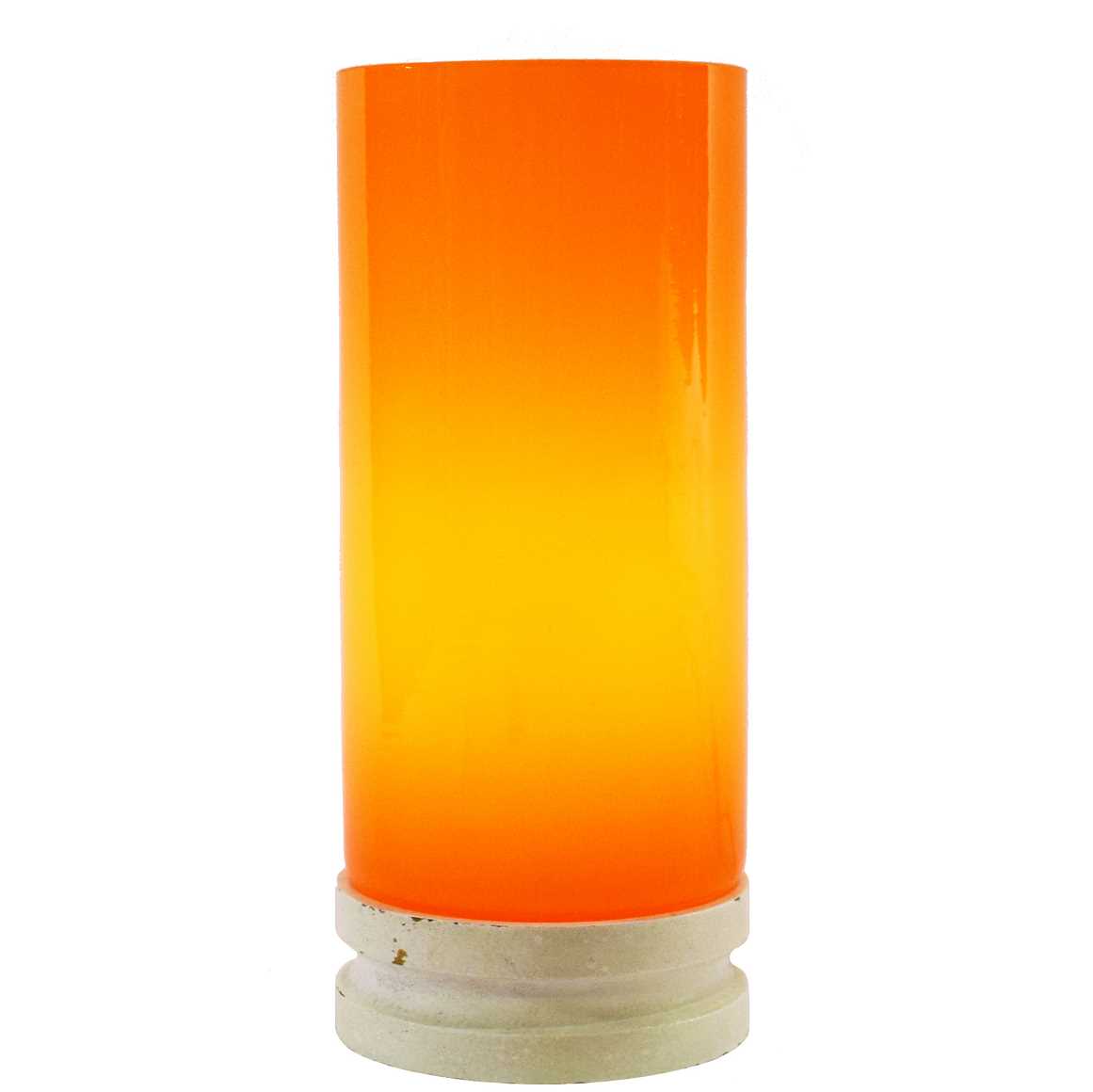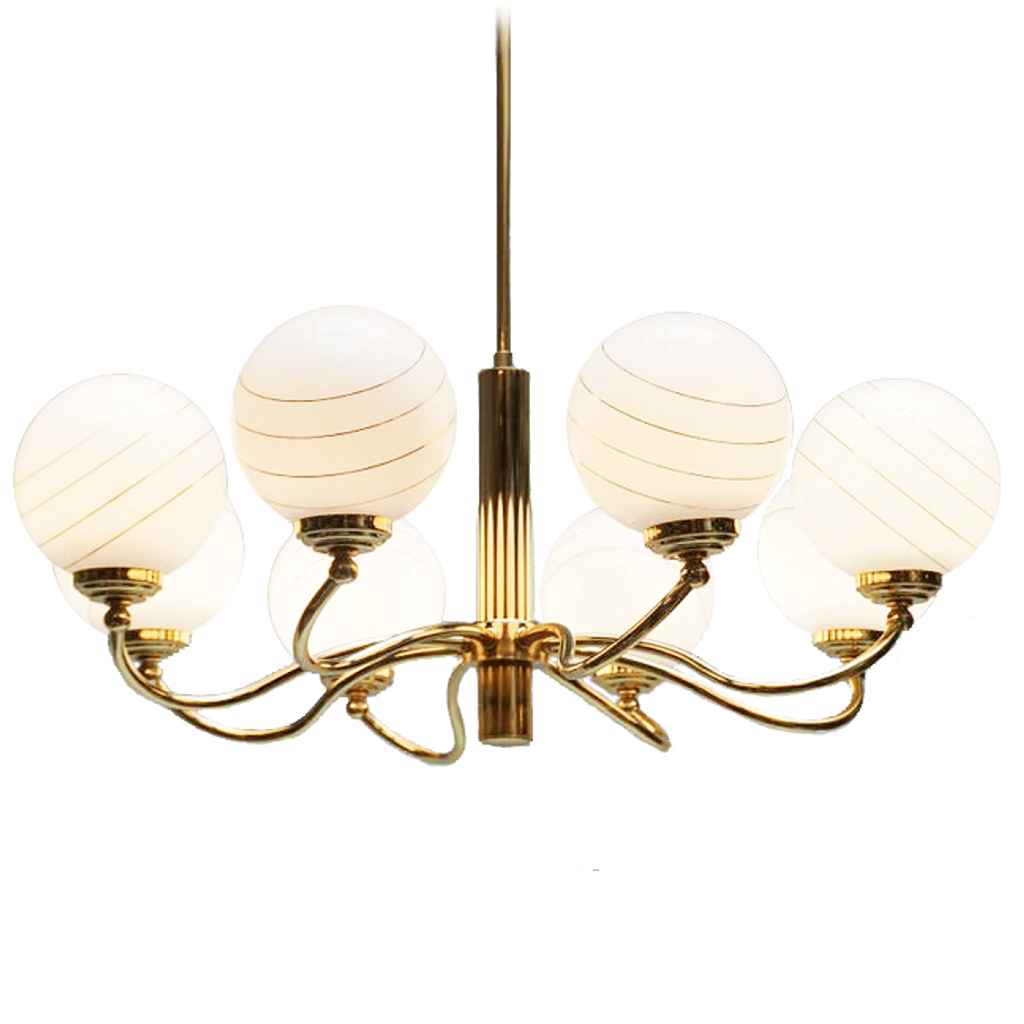1970s Prova Desk Lamp
Materials: White painted round base with a rectangular built-in switch. Galvanised iron bottom lid. White painted rod. Chrome goose-neck. White painted aluminium tubular lampshade, painted white inside. Bakelite E27 socket.
Height: 44 cm / 17.32” – adjustable
Lampshade: 23 x 11,5 cm / 9.05 x 4.52”
Base: ∅ 12,5 cm / 5.51 x 4.92”
Electricity: 1 bulb E27, 1 x 60 watt maximum, 110/220 volt.
Any type of light bulb can be used. Not a specific one preferred.
Period: 1970s – Mid-Century Modern.
Designer: To be appraised.
Manufacturer: To be appraised.
Other versions: This 1970s Prova desk lamp exists in many colours. Also made in a smaller version (+- 31 cm / 10.23” high) with a slightly different base with chromed edges on top, as you can see.
These desk lamps are often attributed to Gepo, Anvia or Herda, 3 light producers from the Netherlands. However, these lamps were never sold by these companies.
In Europe these lamps were sold by Massive from Belgium, in the United Kingdom by BHS. In France by Aluminor.
Prova was a house label for British Home Stores (BHS). Not only lamps exist with this label, also clothing.
There is no label present on this one. Below is the label from the company, it was glued on another, identical lamp.
In all probability these lamps were produced by an anonymous Italian mass producing company, maybe owned by Massive from Belgium. The company was located in Florence, Italy. Sometimes you find them labelled with “Made in Florence, Italy” or “Made in Italy.
BHS
British Home Stores was a British department store chain, primarily selling clothing and household items. The company was founded in 1928. It went bankrupt in 2016. The Qatari Al Mana Group purchased BHS and formed a new business, BHS International (UK) Limited, based in London. It launched a new website: bhs.com.
Acciarri
The switch is made by the Italian company Acciarri. A small company that is long gone. However Acciarri also produced lamps. Sometimes you find one for sale on the internet. Most of the time it is an industrial architect desk lamp from the 1970s. Something completely different than these lamps.
Acciarri produced switches for companies such as Reggiani (Rome & Milan, Italy). Acciarri is an Italian family name, mostly found on the east coast of the country. No information to be found about this company. Also Massive from Belgium used Acciarri parts, and many other companies.
VLM Components
The socket and wire were produced by VLM Components, also from Italy. VLM Components was founded in 1945 in Buccinasco, a small village near Milan, Italy. VLM is part of the Relco Group, founded in 1967. Today they are the owners of the brands Relco, Leuci, Relco Lighting, VLM and Segno. The company is famous for the switches they produced that were designed by Achille Castiglioni.
Massive
Origins and Early Growth (1926–1970s)
Massive started in 1926, when Pieter-Jozef De Jaeck founded a bronze foundry in Wilrijk, near Antwerp, Belgium. Initially, the company crafted traditional bronze items such as candlesticks, crucifixes, and chandeliers in-house using established casting methods.
However, as the market evolved during the 1930s and 1940s, Massive quickly adapted to meet changing consumer needs. Therefore, the company gradually introduced more functional lighting products for households. After World War II, electric lighting became more popular across Europe.
Consequently, Massive began combining classic design with modern electrical technology. This strategic shift enabled the brand to reach new customers and grow steadily.
By the 1950s, Massive had earned a solid reputation across Belgium. Its lighting fixtures – often inspired by mid-century trends – were both affordable and practical. Moreover, they were widely available in hardware and furniture stores. As a result, they became a staple in many homes.
In the 1960s, Eddy De Jaeck, the founder’s son, joined the company. He introduced semi-industrial production techniques and optimized logistics. As a result, Massive shifted from a craft-based workshop to a mass production business. This major change laid the groundwork for international expansion.
Design Approach and Product Strategy
Massive became known for producing lighting in the style of more exclusive brands. While they didn’t make direct copies, many of their designs were clearly “inspired” by well-known models. Nevertheless, the company also released some original highlights that stood out in their own right.
In addition to their own production, Massive distributed a significant number of lamps made by other manufacturers. This strategy was not unusual at the time. Many lighting companies across Europe followed the same practice to broaden their product range and appeal to a wider market.
International Expansion and Market Leadership (1970s–2000s)
During the 1970s, Massive expanded rapidly. With Eddy De Jaeck at the helm, and later his sons Piet and Jan De Jaeck, the company grew into a multinational enterprise. To stay affordable and increase volume, Massive moved production to Eastern Europe. Later, it extended manufacturing to China. This deliberate strategy helped the brand stay competitive in a changing market.
By the 1980s, Massive had become one of the top lighting brands in Europe. Its catalog included thousands of options for both indoor and outdoor use. Furthermore, the brand balanced style, affordability, and reliability. Because of this, it gained popularity in both Western and Eastern Europe.
In the Netherlands, Massive began operations in 1962. In addition, the company opened Massive Gorinchem in 1969. This location served as the Dutch headquarters for more than 40 years. Eventually, in late 2012, it relocated to Eindhoven.
Ownership Changes and the Philips Takeover (2002–2010)
In 2002, the De Jaeck family sold Massive to CVC Capital Partners for about €250 million. This move transformed the company into part of the new group, Partners in Lighting International (PLI).
Over the next years, PLI expanded quickly. For example, in 2005, the group acquired Modular Lighting Instruments. Then, in 2006, it added Trio Leuchten from Germany. As a result, PLI marketed over 10,000 products under brands like Massive, Lirio, Trio, Aqua, and Cucina.
The company grew further by employing about 5,000 people and operating in more than 70 countries. In 2007, Royal Philips Electronics announced plans to acquire PLI. The deal closed in 2008, which strengthened Philips ‘ position in the European home lighting market.
Soon afterward, Philips rebranded all Massive stores in Belgium as Light Gallery. By 2014, the Massive name had vanished from packaging and store displays alike.
The End of an Era and the Move to Signify (2010–2024)
After the acquisition, Massive ‘s visibility declined steadily. In 2016, Philips Lighting became a separate, publicly traded company. Then, in 2018, the company rebranded as Signify. This new identity marked a fresh focus on smart and connected lighting.
Eventually, in April 2024, Signify shut down the Light Gallery website and redirected all content to its main platform. Although the Massive name no longer appears in stores, its legacy lives on. Millions of homes throughout Europe still feature its recognizable and timeless lighting designs.

